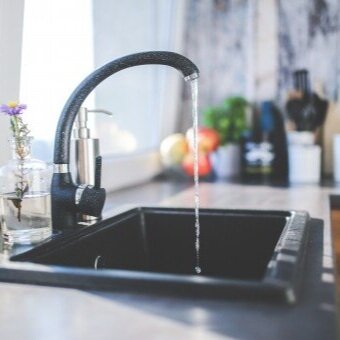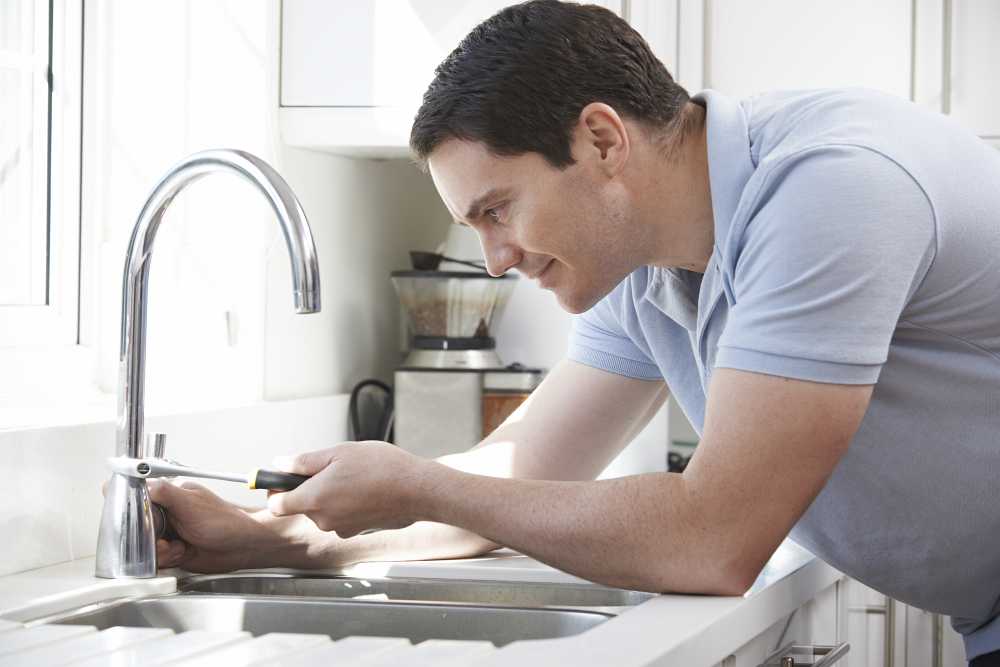Effects of a Faulty Faucet
Effects of a Faulty Faucet
Blog Article
We've stumbled upon this article pertaining to Causes and Consequences of a Leaky Faucet down the page on the internet and thought it made good sense to write about it with you on this page.

Introduction
A leaky faucet might feel like a small annoyance, yet its repercussions expand much beyond the periodic drip. Comprehending the results of a leaking faucet is important for both property owners and the environment. In this article, we'll explore the various influences of this common family problem and why addressing it immediately is vital.
Root Causes Of Leaky Faucets
Leaking taps can arise from a selection of factors, consisting of damage, high water pressure, and corrosion. Over time, the continuous use of faucets can cause worn-out seals and gaskets, causing leaks to create. In addition, extreme water stress can place pressure on plumbing components, bring about leaks. Rust and corrosion can additionally deteriorate faucet components, making them prone to leakage.
Water Waste
One of the most significant consequences of a dripping faucet is water wastefulness. Also a small drip can amount to gallons of drainage in time. This not only increases water costs however likewise contributes to water scarcity and ecological destruction. Addressing dripping faucets promptly is vital for conserving this valuable source and reducing its influence on the earth.
Financial Influence
In addition to drainage, leaky faucets can likewise have a substantial financial impact. Boosted water costs are a straight effect of water wastage, costing property owners numerous dollars yearly. Additionally, the price of fixing water damage brought on by leakages can be significant, particularly if left unattended for an extended period.
Ecological Effect
The ecological effect of dripping taps extends past water waste. By saving water, house owners can add to more comprehensive initiatives to reduce water scarcity and shield all-natural environments. Sustainable alternatives such as rain harvesting and water-efficient components can better reduce the environmental impact of household water use.
Technical Solutions
Improvements in innovation have brought about the growth of smart taps and water-saving tools that help lessen water waste. Smart taps utilize sensing units to spot activity and readjust water flow as necessary, decreasing waste without giving up convenience. Water-saving devices such as aerators and low-flow showerheads are additionally reliable in conserving water without jeopardizing efficiency.
Global Perspectives
While leaking taps may seem like a local issue, they add to more comprehensive worldwide obstacles such as water deficiency and climate modification. In areas already dealing with water anxiety, every drop counts, making leak avoidance and repair work necessary. By adopting water-saving practices and purchasing sustainable modern technologies, homeowners can play their part in attending to these pushing worldwide concerns.
Governing Procedures
Government regulations play an essential duty in alleviating the effect of leaky taps and advertising water preservation. From building codes that require water-efficient fixtures to water-saving rewards and rebates, policymakers have a variety of devices at their disposal. By executing and applying these guidelines, governments can make sure that property owners prioritize water preservation in their day-to-days live.
Neighborhood Influence
Dealing with leaking faucets requires cumulative efforts at the neighborhood degree. By increasing recognition regarding the value of water preservation and supplying sources for leakage detection and repair service, regional authorities can equip home owners to act. Campaigns such as water-saving discount programs and leakage detection campaigns can incentivize actions modification and advertise liable water usage.
Situation Researches
Real-life examples of the effect of leaking taps underscore the relevance of proactive upkeep and prompt fixings. From water damages to skyrocketing water bills, the consequences of ignoring leaks can be serious. By sharing these case studies, house owners can better recognize the relevance of attending to leaking taps quickly.
Educational Campaigns
Educational projects play a vital duty in increasing awareness about the impacts of leaking taps and advertising water preservation methods. With workshops, seminars, and online resources, property owners can discover exactly how to find and fix leakages themselves. By equipping people with expertise and tools, educational campaigns can promote a culture of responsible water use within communities.
Wellness Problems
Leaking faucets can develop helpful atmospheres for mold and mildew and mildew development, positioning wellness dangers to occupants. The existence of mold can aggravate respiratory concerns and allergies, especially in susceptible people. Furthermore, water damage resulting from leakages can endanger the structural stability of structures and lead to expensive repairs.
DIY vs. Specialist Fixing
When confronted with a leaky tap, homeowners often discuss whether to attempt repair work themselves or hire an expert plumber. While do it yourself repair work can save money, they may not always attend to the hidden problem successfully. Specialist plumbings have the know-how and equipment to diagnose and fix leaks appropriately, making certain long-lasting remedies and comfort for homeowners.
Preventive Measures
Protecting against leaky faucets calls for regular maintenance and positive actions. Basic jobs such as changing worn-out washing machines and seals can protect against leakages from developing. Additionally, upgrading to top notch components and lowering water stress can aid lengthen the life-span of taps and decrease the threat of leakages.
Conclusion
Finally, the effects of a leaky faucet expand much past the periodic drip. From water wastefulness and boosted water expenses to health and wellness issues and environmental influence, the effects of neglecting leaks can be significant. By resolving leaking faucets without delay and taking on water-saving methods, homeowners can alleviate these effects and add to a more sustainable future.
Why You Shouldn’t Ignore a Leaky Faucet in Your Home
What Causes a Leaky Faucet?
Various factors can cause a leak, from loose and worn-out parts to corrosion. Your faucet has four essential components from which most plumbing issues will stem: the O-ring, the valve seat, the washer and the gasket.
What Is an O-Ring?
The O-ring is a stem screw that fastens parts of the faucet in place, preventing water from leaking out of the spout. Depending on your faucet type, the stem might have multiple O-rings. Water will drip from the faucet’s handles and base if this part breaks or deteriorates.
What Is a Valve Seat?
The valve seat controls the flow and temperature of the water. Found at the base of the handle, it works as a seal for the faucet’s stem. The valve seat ensures the water is allowed to flow or is blocked as the handles dictate. You’ll know it’s malfunctioning when water leaks from your faucet’s sides.
What Is a Gasket?
The gasket is found between the water inlet and the valve stem. It creates a seal between the faucet and the sink, holding its joints by aerators attached to the stem’s head. Water will trickle out from the base if the gasket isn’t working.
What Is a Washer?
The washer secures the handles and prevents leakage, serving a similar purpose to the O-ring. While the O-ring is ordinarily round and made from an elastic material, such as rubber, the washer is square-shaped and composed of brass, copper and other hard metals. If it malfunctions, corrodes or has been improperly installed, water will leak out of the handles, causing that incessant faucet drip.
Why Is a Leaky Faucet Dangerous?
A leaky faucet left alone for too long can have significant consequences.
Pest Infestations
Since bugs and rodents gravitate towards the scent of water, a leaky faucet will draw pests to your sink. Both are looking for leaks accessible through crawl spaces, which a faucet provides. If you leave water dripping for too long, you run the risk of an infestation.
Rust
If one of the faucet parts has started to corrode, the resulting rust can spread to your pipes and valves with startling speed. The rust might even lead to cracks or other impairments, resulting in more severe plumbing issues.
Your sink could also sustain damage from a leaky faucet. The water in your tap possesses sparse elements of calcium and iron that can stain your sink with repeated and prolonged exposure. Once those elements in the water have been open to the air for some time, your sink will start to rust, creating marks that can be difficult to remove.
https://www.tomsmechanical.com/blog/why-you-shouldnt-ignore-a-leaky-faucet-in-your-home

I discovered that entry about Here's How to Fix a Leaky Faucet when surfing the web. Don't hesitate to set aside a second to share this post if you enjoyed it. I am grateful for being here. Return soon.
Report this page